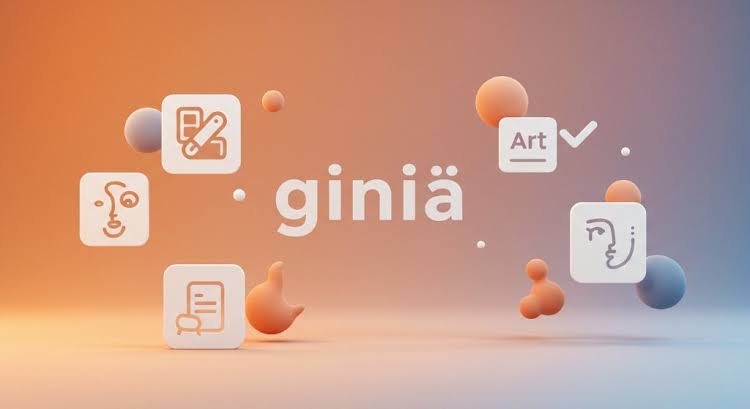In an era when artificial intelligence (AI) powers nearly every layer of digital enterprise, the question isn’t whether a SaaS product uses AI—it’s how. AI SaaS product classification criteria help organizations, investors, and developers understand how to categorize, benchmark, and evaluate AI-driven software across functionality, architecture, and commercial application. This article presents a structured, forward-thinking approach to classifying AI SaaS products in 2025, highlighting essential categories, challenges, and decision frameworks for identifying real, valuable AI from buzzword marketing – AI SaaS Product Classification Criteria.
As enterprises adopt AI tools at scale, understanding classification becomes foundational—not just for marketing and compliance, but for procurement, risk assessment, and ethical deployment.
Why Classify AI SaaS Products?
Software-as-a-Service (SaaS) has dominated software delivery for over a decade. As AI technologies matured, they were layered onto SaaS architectures, giving rise to AI SaaS—products that integrate machine learning, natural language processing, computer vision, or other intelligent systems into cloud-based applications.
Classification of these products serves several goals – AI SaaS Product Classification Criteria:
- Procurement clarity: IT departments need to know what they’re buying.
- Security auditing: AI introduces new risks—classification helps flag them.
- Market analysis: Investors and analysts use classification to spot trends.
- Compliance alignment: In regulated sectors, classification is crucial to meeting evolving standards.
- Interoperability and scaling: Architecture-based classification helps design flexible tech stacks.
But AI is a spectrum—not a toggle. Classification helps break down where a product sits on that spectrum and how to evaluate its true capabilities.
Core Dimensions of AI SaaS Classification
A robust classification framework typically considers five dimensions. These categories are orthogonal, meaning a product can be classified across all five simultaneously.
| Dimension | Definition |
|---|---|
| Functional Intelligence | What the AI actually does |
| Architectural Integration | Where AI lives in the software stack |
| Model Openness | Whether the AI is a closed or open system |
| Human Interactivity | How users interact with the AI |
| Ethical and Regulatory Status | Degree of compliance and transparency |
Each dimension provides a lens through which to assess a product’s technical depth and operational value.
1. Functional Intelligence: What the AI Actually Does
AI in SaaS products varies greatly depending on task complexity and scope. Understanding functional intelligence means classifying what type of problem the AI is solving.
| Category | Function Example | Representative Use Cases |
|---|---|---|
| Predictive | Forecasting future outcomes | Churn prediction, demand forecasting |
| Prescriptive | Offering recommended actions | Pricing optimization, email timing |
| Cognitive | Emulating human thought processes | Virtual assistants, chatbots |
| Generative | Creating new data or content | AI writers, code generators |
| Perceptual | Processing sensory input | Image recognition, voice-to-text |
| Decision Automation | Making business-critical decisions | Loan approvals, security alerts |
This classification is crucial for procurement teams and legal departments assessing risk, value, and use boundaries.
2. Architectural Integration: Where AI Lives in the Stack
How AI is architected in the SaaS model influences performance, cost, scalability, and compliance.
| Integration Type | Description | Implications |
|---|---|---|
| Embedded AI | Model is built into the core application | High speed, lower flexibility |
| API-based AI | External AI model called via API | Modular, scalable, vendor lock-in risks |
| Edge AI | AI processed locally on device or endpoint | Low latency, data privacy, hardware-dependent |
| Middleware AI | AI functions as a layer between user interface and database | Customizable, complex architecture |
| Plugin AI | AI capabilities added via extensions or integrations | Easier upgrades, inconsistent UX |
A product might integrate AI in multiple architectural layers—classifying them helps assess technical dependencies and vendor resilience.
3. Model Openness: Transparency and Control
Not all AI is visible to the customer. The model openness dimension defines how much control the user or customer has over the model’s behavior and learning process – AI SaaS Product Classification Criteria.
| Type | Characteristics | Example Products |
|---|---|---|
| Fully Closed | Proprietary, black-box systems | Salesforce Einstein, Grammarly |
| Semi-Open | Select model parameters or outputs accessible | Notion AI, Figma plugins |
| Fully Open | Model source and data pipelines are transparent | Open-source LLM integrations, Hugging Face models |
| Customizable AI | Users can retrain or adapt models with domain-specific data | DataRobot, H2O.ai |
Model openness affects trust, explainability, and compliance, especially in sectors like finance and healthcare.
4. Human Interactivity: Role of the User
The degree to which users interact with AI determines both the UX complexity and the responsibility for outcomes.
| Interactivity Level | User Role | Use Case |
|---|---|---|
| Passive | AI operates invisibly in the background | Background personalization, fraud alerts |
| Guided | AI assists but user initiates tasks | Autocomplete, smart suggestions |
| Conversational | Two-way natural language interface | Chatbots, virtual agents |
| Supervisory | Human approves or edits AI decisions | Content review, document summarization |
| Co-Creative | Human and AI create output together | Design tools, code assistants |
Classifying interactivity is essential for designing onboarding flows, training protocols, and user trust safeguards.
5. Ethical and Regulatory Classification
In 2025, AI compliance is no longer a checkbox—it’s a requirement. Ethical classification focuses on transparency, auditability, and alignment with global standards.
| Criteria | Scope | Application |
|---|---|---|
| Explainability | Can AI decisions be understood? | Required in EU AI Act categories |
| Bias Mitigation | Are models trained with fairness safeguards? | Hiring platforms, credit-scoring tools |
| Auditability | Can decisions be externally reviewed? | Healthcare AI, legal tech |
| Data Privacy Compliance | GDPR, CCPA, and sectoral laws | Any product handling personal or biometric data |
| Model Traceability | Can model version history be tracked? | High-risk AI categories |
Proper classification in this dimension influences not only product adoption, but also legal exposure and public trust.
Putting It All Together: A Multi-Axis Classification Framework
To evaluate any AI SaaS product holistically, classify it across all five axes. Here’s an example:
| Dimension | Classification |
|---|---|
| Functional Intelligence | Generative |
| Architectural Integration | API-based |
| Model Openness | Semi-open |
| Human Interactivity | Co-creative |
| Ethical/Regulatory | GDPR-compliant, explainable, partially auditable |
Such a matrix enables IT leaders, compliance officers, and investors to speak the same language when evaluating tools.
Challenges in AI SaaS Classification
Despite the value of classification, there are barriers:
- Marketing Hype: Many products claim “AI-powered” status with only rule-based automation.
- Evolving Standards: Definitions of “ethical AI” or “intelligence” are still fluid.
- Black-Box Models: Providers may not disclose model details, even to paying customers.
- Cross-Functionality: Products may straddle multiple classifications depending on how they’re used.
These challenges underscore the need for continuous reevaluation and third-party certification as the industry matures – AI SaaS Product Classification Criteria.
AI SaaS Product Classification in Regulated Industries
Classification takes on new importance in regulated sectors like healthcare, finance, and law. These industries often require:
- Explainability: Especially when AI outputs influence health or financial decisions.
- Validation Protocols: Documentation of model performance in real-world conditions.
- Security Architecture Reviews: Where AI pipelines intersect with protected data.
- Human Oversight Mandates: AI cannot act autonomously in critical processes.
Failure to properly classify and document AI functionality in these contexts can result in compliance failures, fines, or even product bans.
Industry Examples by Classification Type
| Product | Functional | Architecture | Model Openness | Interactivity | Compliance |
|---|---|---|---|---|---|
| Salesforce Einstein | Predictive | Embedded | Closed | Guided | GDPR-ready, non-auditable |
| GitHub Copilot | Generative | API | Semi-open | Co-creative | Low-risk, user-moderated |
| ChatGPT for Docs | Cognitive | Plugin | Closed | Conversational | Needs user oversight |
| DataRobot | Prescriptive | Middleware | Open/customizable | Supervisory | Sector-specific compliant |
| Zoom AI Companion | Perceptual | Embedded | Closed | Passive | User data encrypted |
The Role of Open Source in Classification
Open-source models are redefining classification boundaries. With tools like Hugging Face, LangChain, and LlamaIndex, developers now:
- Customize pre-trained models
- Host explainable pipelines
- Share benchmarks and audit logs
This has created a new class of DIY AI SaaS, where users build services that rival commercial offerings—and demand new frameworks for classification that include open contribution and lifecycle transparency.
Classifying AI SaaS in M&A and Investment
Venture capital and private equity firms increasingly use AI classification to:
- Assess defensibility of AI IP
- Measure regulatory risk
- Analyze product scalability
- Compare model licensing strategies
A well-documented classification matrix is now a key part of due diligence, often determining deal velocity and valuation.
Toward Standardized Certification
In 2025, multiple initiatives aim to standardize AI product classification, including:
- ISO/IEC 42001: AI Management System
- EU AI Act categories (minimal to high-risk)
- NIST AI Risk Management Framework
- Industry-specific labels (e.g., “Fair AI” or “Audit-Ready”)
These emerging standards may eventually lead to labeling systems akin to “Nutrition Facts” for AI SaaS—detailing architecture, function, and risk.
Final Thoughts
Classifying AI SaaS products is not just a technical exercise—it’s a critical act of transparency, accountability, and strategic foresight. As AI technologies integrate deeper into the enterprise stack, the ability to define what an AI product is, how it works, and how it interacts with people and data will separate leaders from laggards.
The classification framework outlined here is not static; it must evolve alongside the technologies it seeks to organize. But its core goal remains timeless: to bring clarity and shared understanding to one of the most complex and consequential areas of modern software.
FAQs
1. Why is it important to classify AI SaaS products?
Classification helps organizations understand how AI features are integrated, assess product capabilities, evaluate regulatory risks, and make informed procurement, investment, or deployment decisions in line with strategic and ethical goals.
2. What are the main dimensions used to classify AI SaaS products?
The five core dimensions are:
- Functional Intelligence (what the AI does)
- Architectural Integration (where AI resides in the tech stack)
- Model Openness (level of transparency and control)
- Human Interactivity (how users engage with AI)
- Ethical/Regulatory Status (compliance and auditability)
3. How does architectural integration affect AI SaaS performance?
Where AI is integrated—embedded, API-based, middleware, edge, or plugin—determines performance factors like speed, scalability, data security, vendor lock-in, and latency.
4. Are open-source AI models easier to classify?
Yes. Open-source models often come with documentation, versioning, and performance benchmarks, making it easier to classify their functionality, openness, and compliance profile—unlike black-box commercial solutions.
5. Can a single AI SaaS product fall into multiple classification categories?
Absolutely. Most modern AI SaaS products span multiple categories across the five classification dimensions, reflecting their multi-layered capabilities and deployment complexity.




